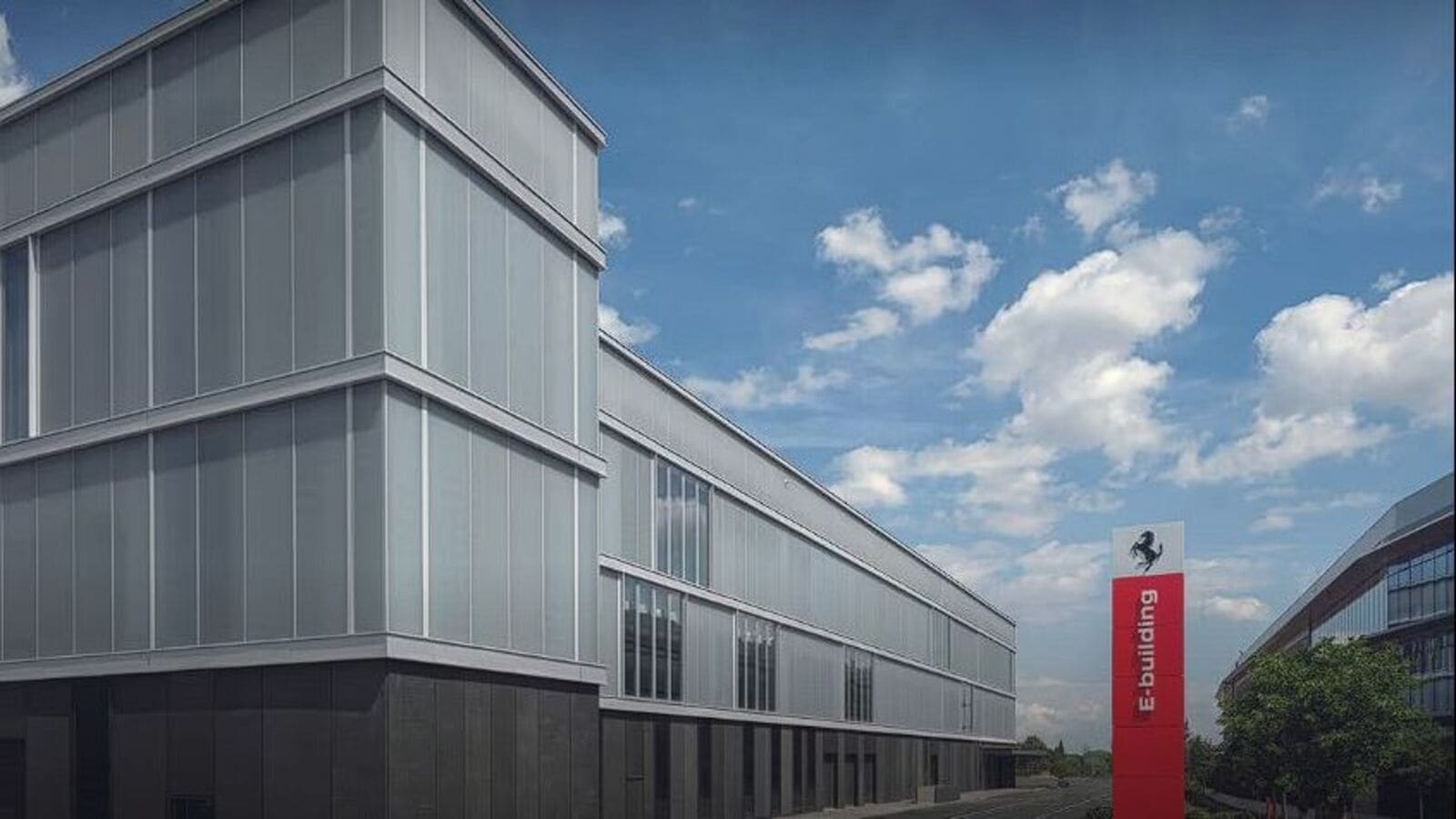While the factory was officially inaugurated on the 21st of June, 2024, production kicked off on Monday, the 24th of June. At present, the $214 million dollar facility will manufacture Ferrari’s current-gen models such as the Purosangue SUV, and the SF90 – the former being Ferrari’s first-ever SUV while the latter is the brand’s first-ever plug-in hybrid. The highly awaited, if highly polarizing all-electric car is scheduled for a global unveil in 2025, and begin production in 2026.
What does the “E” in “E-Building” stand for?
Energy, evolution and environment (no room for emission) according to Ferrari CEO Benedetto Vigna. The E-Building is a massive, multi-storey structure that, for the first time in history, expands Ferrari’s existing footprint through the purchase and development of new land. It essentially expands the existing facility in Maranello with a new unit on the north edge of the famous Maranello factory. Full scale production is expected to commence in 2025, with over 300 people employed in the new wing.
While a pure electric vehicle is uncharted territory for Ferrari, the prancing horse is no stranger to electric technology. Ferrari developed its KERS F1 system (short for Kinetic Energy Recovery System back in 2009 – an internally charging hybrid system that utilises superfluous kinetic energy – following it with the launch of the LaFerrari hypercar. Today, that technology has evolved to the point that Ferrari has two plug-in hybrids in its range – the SF90 and the 296 GTB – both of which can briefly run on electric power alone.
In terms of green credentials, the E-Building gets 3000 solar panels (Maranello has a grand total of 9000), a huge rainwater tank and other fittings that lead to a 3.2k ton reduction in CO2 emissions. Everything about Ferrari’s electric powertrain will be produced in-house. To further this goal, Ferrari has even set-up a new e-lab in Bologna to conduct research that enables it to produce everything from e-axles, electric motors and high voltage batteries internally. Yes, Ferrari will assemble its battery packs here, but as can be expected, the cells will be sourced from an external supplier. In addition to that, Ferrari also wants to create more technological tools and offer greater personalisation options for customers. In an interview with Evo magazine, Vigna stated that it isn’t production that Ferrari wants to ramp-up, but to have greater production flexibility. The idea is to produce series production cars faster and spend the extra time and manpower on research and development.
Also Read : Ferrari’s first-ever electric car to cost over $500,000
At a time when the EU has placed tariffs for Chinese EVs, there is a level of ambiguity with regards to the fate of the internal combustion engine. Although many lobbyists are working overtime to ensure that the ICE-powertrain phase out is complete by 2035, developments around synthetic fuels might give ICE engines a much deserved stay of execution. Especially if they are the sort of engines Ferrari has spent decades perfecting. Which is why Ferrari will not be ceasing production on its older lines. It just needs new, updated ones to work on more complex powertrains, and that’s where the “E-Building” comes in. In the future, the older and therefore, slower production lines can be utilised to manufacture Ferrari’s more exclusive, limited edition cars which aren’t produced on a rushed timeline.
The E-Building is cutting-edge in a variety of ways. Kind of like Apple’s Cupertino-based HQ, colloquially referred to as the “spaceship” or “doughnut”. There’s an easy flow of natural light, heavy usage of glass, an upper-floor station dedicated to EV and hybrid components. There’s simply no way forward for a brand like Ferrari without embracing the electric future. Ferrari is fully cognizant of the shortcomings of the EV powertrain when it comes to performance – it’s not speed, but rather the sense of speed and the level of engagement that a petrol-powered supercar can provide. The theatre of driving, whose maestro Ferrari has been forever. The “E-Building” is a testament not only to Ferrari embracing the future, but also retaining the best aspects of its past. Think of it not as a Ferrari getting electrified, but an EV that’s finally getting the Ferrari treatment.
First Published Date: 27 Jun 2024, 08:58 AM IST

